15 Types of Animals With Long Tails (With Pics)

Most animals have tails, whether long or short, bushy or hairless.
And while the appendages are fascinating, they exist not only to make the animals unique or pretty. In fact, the tails are crucial for the survival of all these animals.
Curious to learn about these animals?
Well, this post is an all-inclusive list covering different types of animals, including primates, reptiles, fish, and birds.
Why Learn About Animals With Tails?
Learning about these animals is rewarding for us and our fellow planet mates alike.
Here’s how.
While expanding your animal knowledge, you can get motivated and even have a reason to play a part in protecting these creatures, as some are endangered.
So, let’s dive in and learn about tailed animals and how they use their invaluable assets. You’ll also know where to find each animal in its natural habitat.
15 Amazing Animals With Long Tails and How They Use Them
1. Giraffes

Not new to many, giraffes are large hoofed mammals and the tallest terrestrial creatures on earth.
The skyscrapers of the animal kingdom have the longest tails of all land animals, which can grow as long as one meter! With brown and sand-colored patches, the tails are thin and boast long black tufts of hair at the tip.
Functioning as in-built fly swatters, the giraffes use their tails to protect themselves against troublesome flies and insects which try to bite them.
However, while being vital for their survival, the tails are one of the reasons why giraffes are killed, especially in the DRC. Some communities view the tails as status symbols, particularly men during marriages.
Where to find giraffes
Native to Africa, you can find giraffes in the following countries;
- Meru National Park in Kenya
- Arusha National Park in Tanzania
- Hwange National Park in Zimbabwe
- Kruger National Park in South Africa
2. Angola colobus
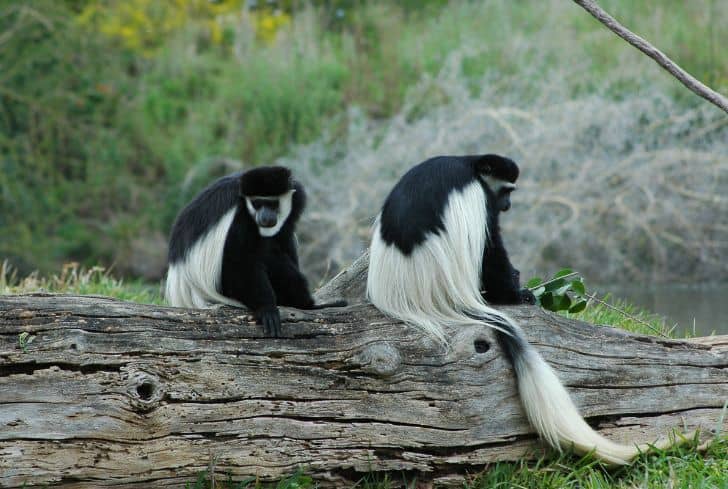
The Angola colobus is a black and white primate and a species of Old World Monkey.
The monkeys have thin, long tails which can grow as long as 75 centimeters. In some animals, they are black, and in others, white – but all tips are usually white.
The primates prefer dense forests and often climb at the top of branches. And that’s where their long tails come in handy. And while they may not be prehensile like in most primates, they function as balance tools, allowing the primates to climb and walk on the trees, just like how you walk on land.
Where to find Angola colobus
They’re widely distributed across central Africa, but the best place to see them is in the Nyungwe Forest National Park in Rwanda. In this region, the primates move in large social groups of about 450 individuals.
3. Long-tailed Grass Lizard
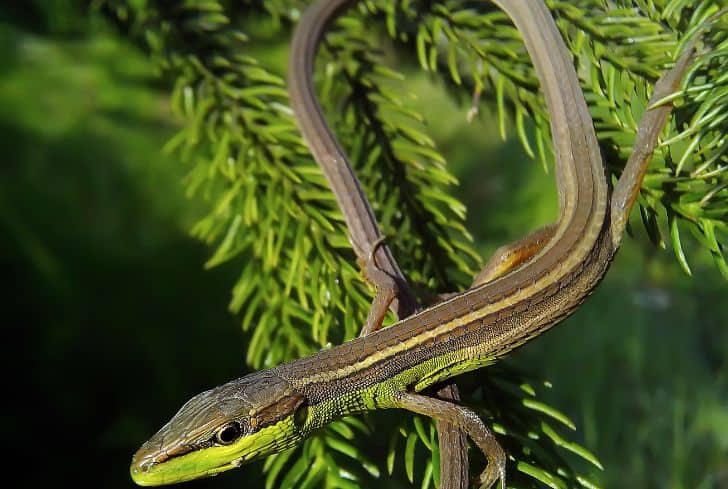
Also called the Asian grass lizard, the Long-tailed Grass Lizard is diurnal and is unique among all reptiles.
The lizard is unique not because it has probably the most prolonged tail among reptiles. It’s because the appendage is prehensile and serves two survival functions.
First, the reptiles use their tails for balance when moving on atop tall grasses. It’s, in fact, why the lizards are swift.
Second, Long-tailed Grass lizards use their tails to flee from predators in a rather unusual way. The tails have natural weak spots, which is an advantage to the lizards as they often break off when grabbed by predators chasing them. Although injured, the lucky reptile escapes.
Where to find Long-tailed Grass Lizards
The lizards are native to Asian countries, including China, India, and Thailand, where they often inhabit grasslands.
Long-tailed Grass Lizards are also kept as pets since they’re hardy in captivity.
4. Common basilisk
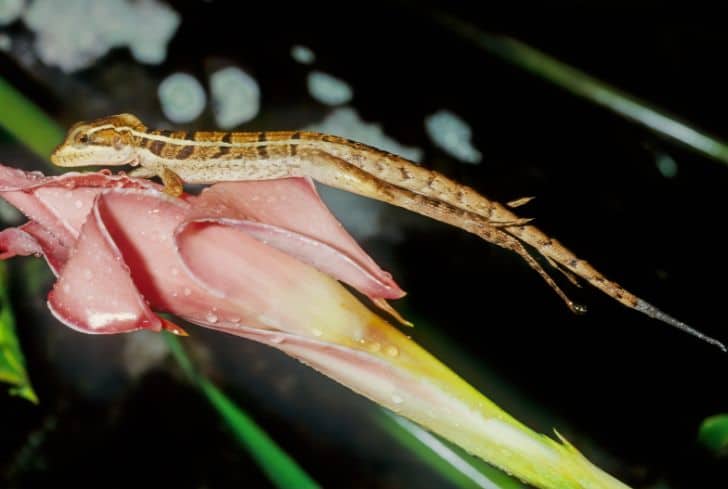
The common basilisk lizard is also interestingly known as the Jesus Christ lizard, thanks to its ability to walk on water. It often lives on tree tops, but if threatened, it can drop into the water and sprint, reaching speeds of about 5 feet per second.
To facilitate it to walk on water, the strange lizard has a long tail, which makes up about 75% of its body. While the tall legs exert great force to prevent the lizard from sinking, the tail, working like a paddle, helps propel it forward.
Where to find common basilisk lizard
The lizards inhabit tropical rainforests of Central and South America.
5. Turtles
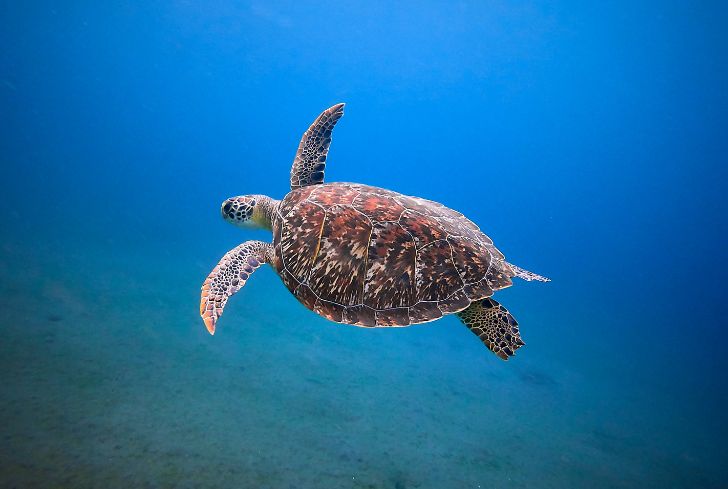
Animals with short tails deserve mentioning too. That’s why we’ve turtles on our list.
And while being short, turtle tails play different roles in these reptiles than all the animals we’ve seen so far.
The primary and most crucial role that the tail of a turtle play is mating. That’s because, in males, it houses the reproductive organs. So during mating, the males lift them to open the cloaca, the female reproductive organ, to facilitate the process.
The other role is acting as a defense tool for the rear part of the body. And when on land, turtles use their tails for balance and movement stabilizers, helping them navigate through rough terrains.
Sea turtles, meanwhile, use their tails to level up the ground and cover their eggs just after laying.
Where to find turtles
Turtles are worldwide, found in every continent except Antarctica. Look for them along the banks of lakes, rivers, ponds, and damp, rocky areas.
6. Rabbits

Among animals with tails, rabbits are not the ones to ignore as their appendages, although short, serve multiple purposes for these adorable creatures.
Both wild and domesticated rabbits use their tails to make signals. When in danger, rabbits flick their tails to send soundless commands to their colleagues.
When you keep them as pets, rabbits can use their tails to communicate various attitudes. For instance, they can wag their tails to show you they like the type of food brought to them.
And for wild rabbits, the tails help them escape predators. Because they are usually white undersides, it’s easy to confuse the chasing predators as the bunnies run in a zigzag style. And since the tail is short, the predator has little to grab.
Where to find rabbits
Because many people keep them as pets, rabbits are among the most common animals (even out of this list ) you can find.
7. Opossums
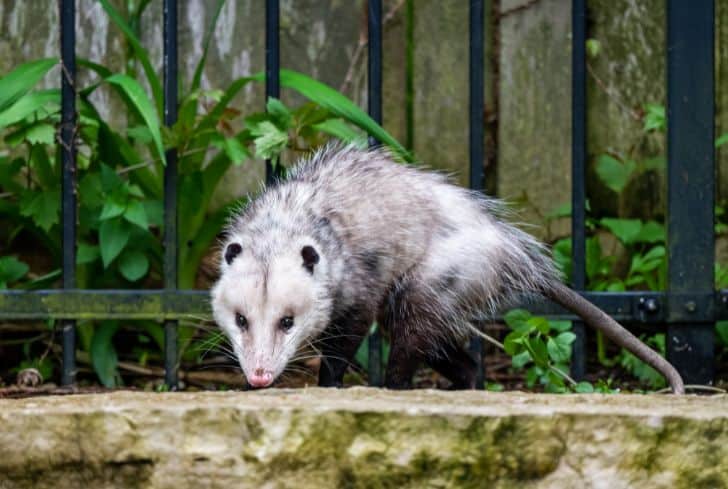
Opossums are small to medium-sized marsupials and one of the most misunderstood animals due to their intimidating and strange looks, which include their naked tails.
But while being naked, the tails of these strange-looking animals are prehensile and function as fifth legs. Hence the animals are agile tree climbers and even perform entertaining antics on branches. For example, the animals can hang upside down, all thanks to their tails.
What’s more, marsupials can use their tails to grasp and carry objects around.
Where to find opossums
Opossums inhabit forested or bushy regions of South, Central, and North America.
8. Wolves
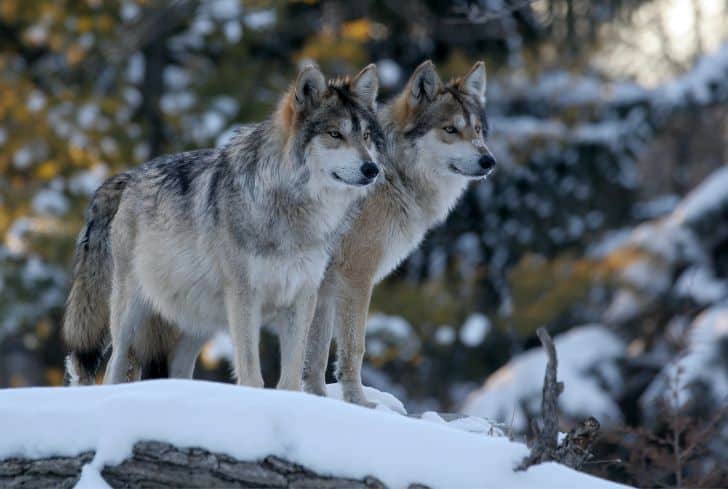
Wolves are large predatory canines that usually move in packs.
These dog-looking animals have long, bushy tails that stay straight whether the wolves are resting or moving.
The primary function of the tail is to keep the animals in balance, especially when hunting.
Wolves also use their tails to communicate. For example, dominant alpha wolves carry them up while the junior members keep theirs between their legs as a sign of submission. Wolves also show goodwill to others by wagging their tails.
Where to find wolves
The best places to see wolves are;
- Yellowstone National Park, Wyoming
- Isle Royale National Park, Michigan
- Katmai National Park, Alaska
9. Cheetahs
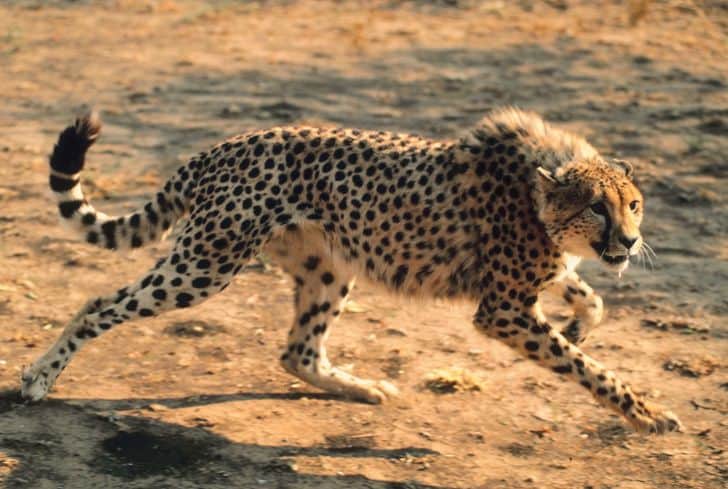
Cheetahs are large, predatory cats and the fastest land mammals, able to clock 70 miles per hour, although they cover short distances.
The predatory animals have long tails, about two-thirds of their body. And it’s because of them that cheetahs reach those insane speeds.
The long tail is also muscular and is flattened at the tip to act as a rudder, guiding the animal when sprinting. As a counterbalance to the cat’s body weight, the tail allows the cheetah to adjust and make sharp turns according to the movement of its prey.
Where to find cheetahs
The cats are native to Africa and some parts of Central Iran.
The best places to encounter them are;
- Okavango, Kwando, Selinda & Savute in Botswana
- Masai Mara Game Reserve in Kenya
- Okonjima in Namibia
10. Crayfish
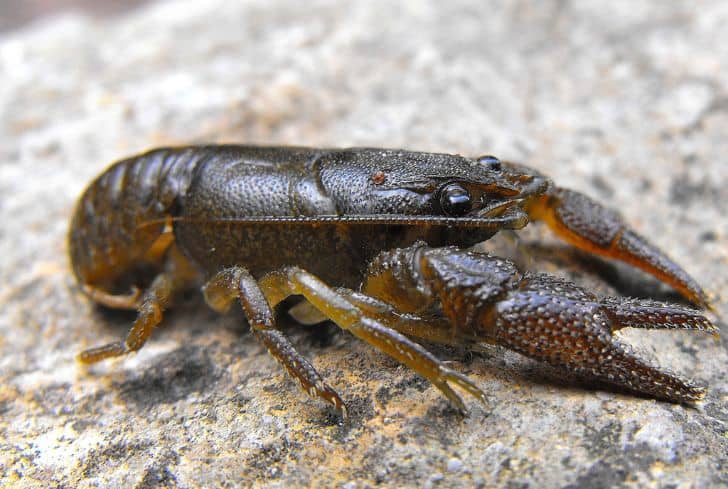
Crayfish is a freshwater crustacean and is closely related to lobsters.
The crustaceans have powerful, muscular tails which they primarily use for swimming. The fish quickly flex their tails to propel themselves forward when feeding at the bottom of the waters. The fish also evade hungry predators as they’re fast swimmers, thanks to their tailed fins.
Where to find crayfish
Easier to find during the summer, crayfish inhabit freshwater ponds, lakes, and shallow rivers worldwide.
11. Fork-tailed flycatcher
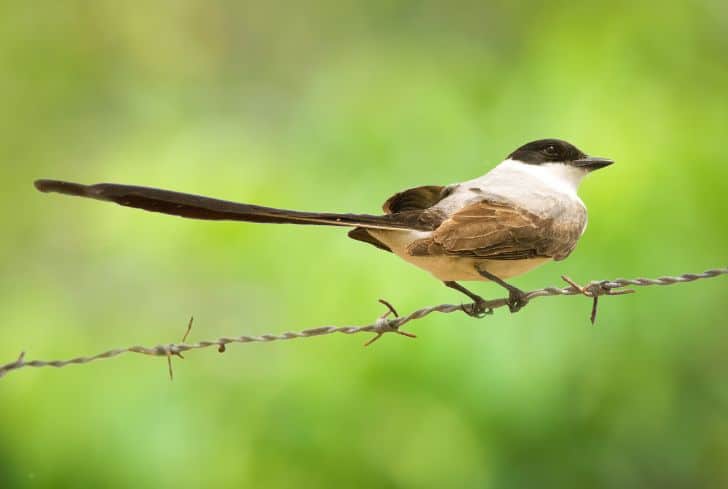
Fork-tailed flycatcher is a small passerine bird and one of the most fascinating to watch, especially when flying.
The spectacular wanderers have extremely long forked tails as the most distinctive feature of the birds. While the birds can measure as long as 41 centimeters, the tails make up roughly three-quarters of the body size.
As one of the fastest birds, the little Fork-tailed flycatchers have their long tails to thank for their incredible flying speeds. Using the tails as rudders, the birds can clock around 65 mph.
Where to find Fork-tailed flycatchers
Inhabiting savannas and grasslands, their ranges span from central Mexico to central Argentina.
12. Ribbon-Tailed Astrapia
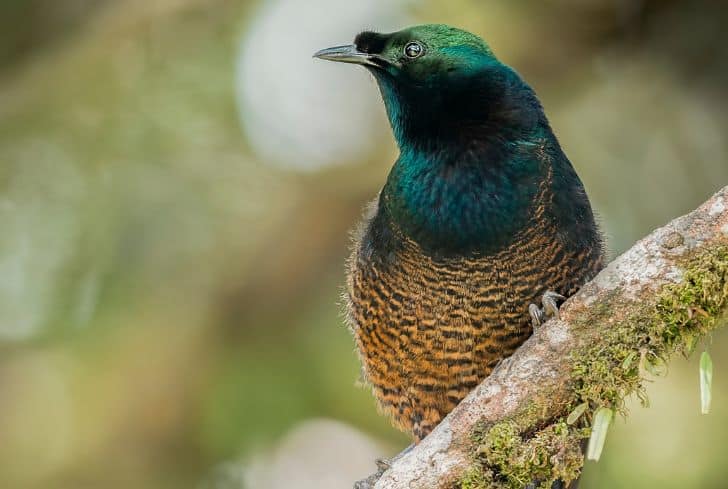
Ribbon-Tailed Astrapias are spectacular birds of paradise due to their beautiful coloration and distinctive excessive long tails.
The male has the most pronounced tail in relation to its body of any bird. The birds measure about 100 centimeters but are only about 32 centimeters if you remove the tail feathers.
While males use their tails to attract the males, these appendages are more of a liability. Often, males take more time to untangle them before they fly, making them easy targets for predators.
Where to find Ribbon-Tailed Astrapias
The birds are endemic to the central highlands of Papua New Guinea.
13. Eastern glass lizard
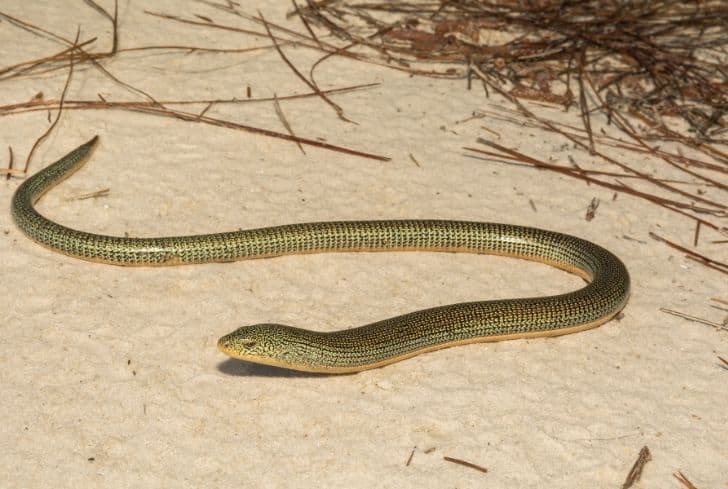
The Eastern glass lizard is a strange-looking reptile you can easily mistake for a snake because it’s legless and has an elongated body.
While the lizard can grow as long as four feet, two-thirds of the body is the tail. And like Long-tailed Grass Lizards, theirs, too, have natural weak spots which can easily detach from the main body.
The eastern glass lizards are great at escaping predators. Although they’re not fast, when predators grab the lizard, the tail easily breaks off, and the lucky reptile flees as the chaser is left distracted.
Where to find eastern glass lizards
The reptiles are common in sandy areas of coastal Georgia and South Carolina.
14. Howler monkeys
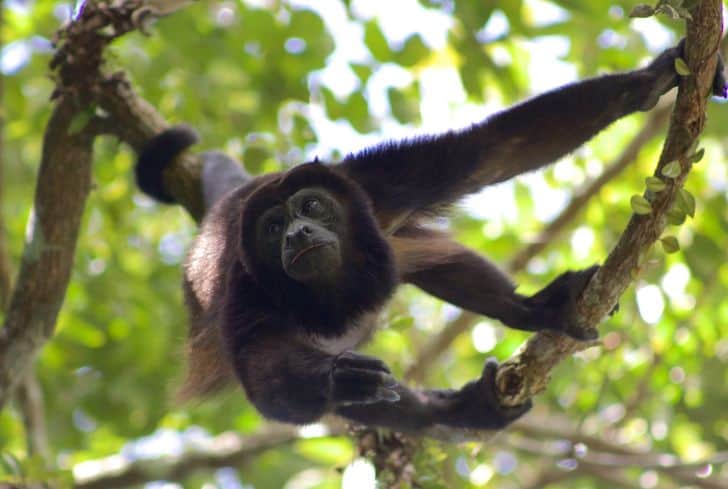
Howler monkeys are the biggest of all New World Monkeys and are known for their howling behavior, making cacophonous cries.
These primates have long, thick prehensile tails making about five times their body length. The tails are crucial for the howlers, as the primates rarely come down. They like staying on tree tops, munching on fruits and leaves.
The monkeys use the tails as fifth arms to grip branches, allowing them to move and hang effortlessly on trees to leverage their arboreal lifestyle.
Where to find Howler monkeys
Howlers are native to deciduous and broadleaf forests of Central American countries.
15. Pangolins
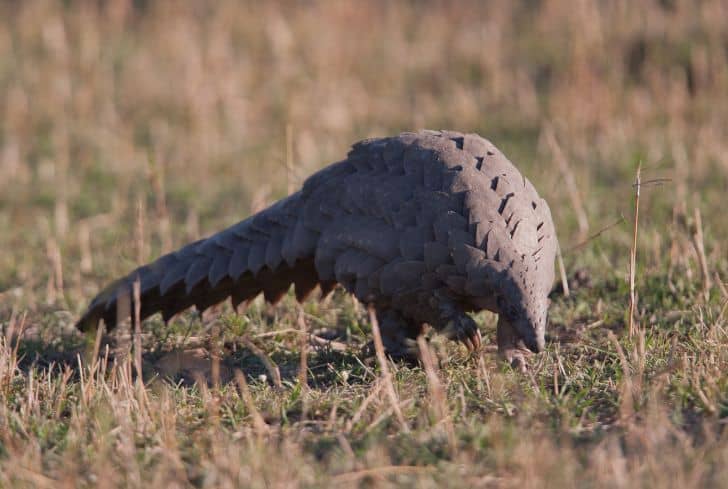
Pangolins are shy mammals known for their behavior of curling themselves into a tight ball from the head to the tail.
The scaled mammals have long, scaly, prehensile tails which can grow as long as 45 centimeters. Their primary function is to provide extra support for body balance, especially when the animals are climbing trees.
Pangolins also use their tails to dangle on trees.
Where to find pangolins
Some pangolin species live in Asia, and others in the Sahara desert in Africa.
Final Thoughts
The list of animals with tails is endless. You can write thousands of words, but we’ve tried to include different animals to come up with this all-inclusive list and cover almost all uses of tails in animals that have them.

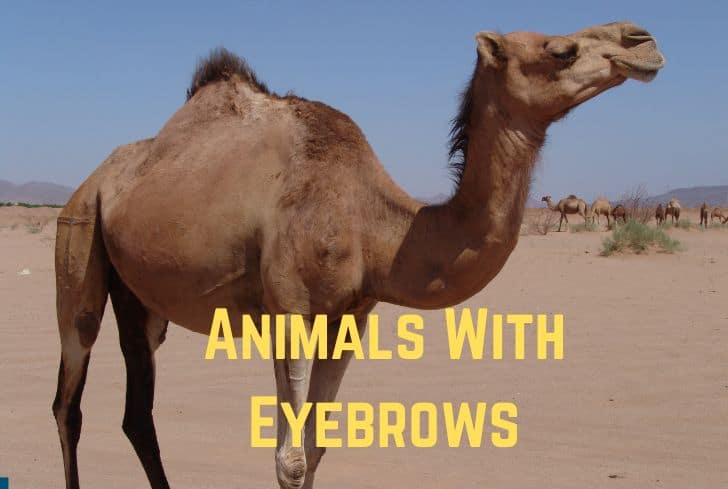



![Hyena vs Wolf [Differences & Strength Comparison]](https://eartheclipse.com/wp-content/uploads/2022/08/Hyena-vs-Wolf.jpg)
![Hyena vs Coyote [Differences & Strength Comparison]](https://eartheclipse.com/wp-content/uploads/2022/08/Hyena-vs-coyote.jpg)